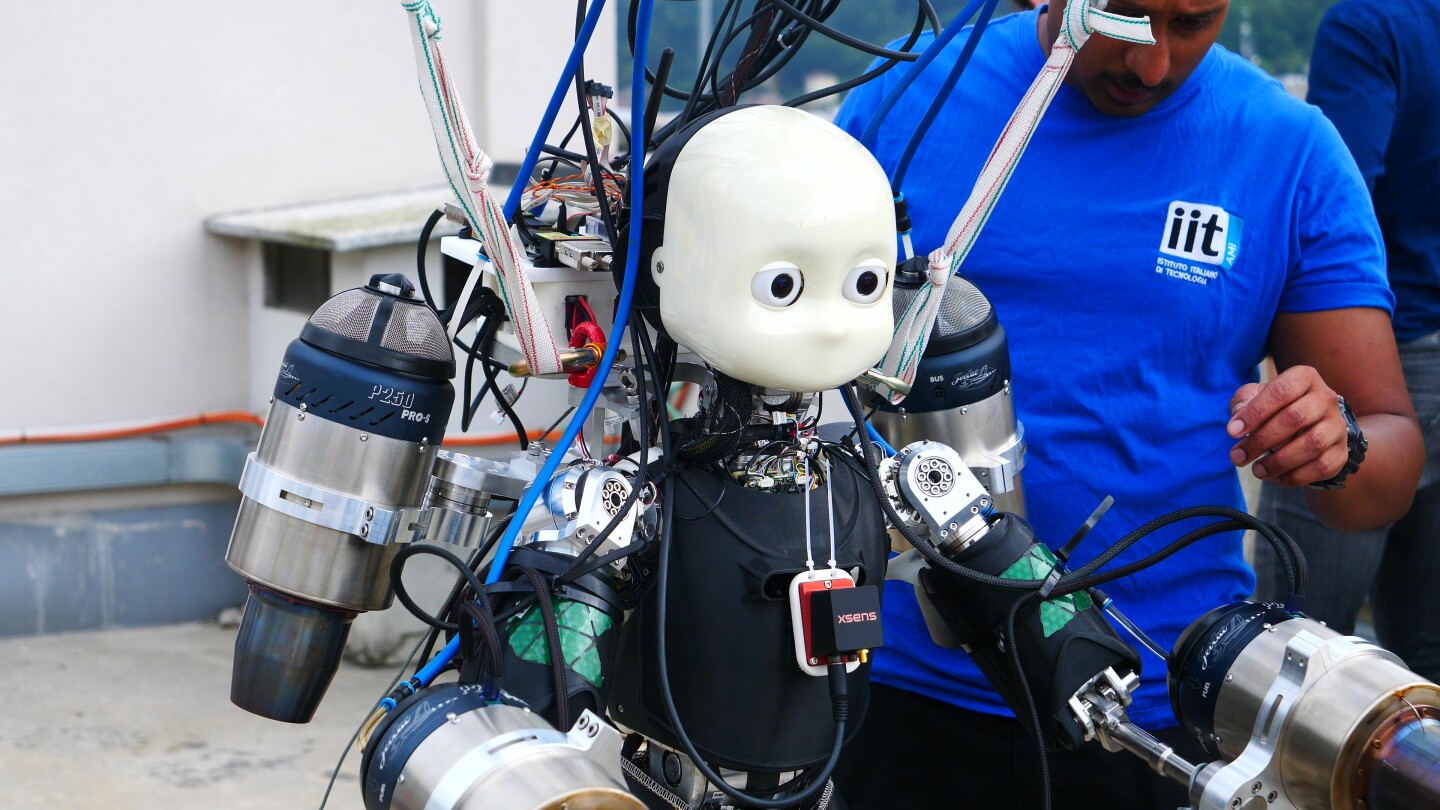Imagine you’re injured on a remote mountain trail but need to call emergency services. If Italian research bears fruit, a small, humanoid robot wearing a jetpack could be the first to arrive on the scene.
A project by the Artificial Intelligence and Machine Intelligence group at the Istituto Italiano di Tecnologia aims to develop iCub, a bipedal child-like creature designed for artificial intelligence research, that can take off using jet power.
In addition to strapping twin jetpacks to their backs, the team also sacrificed the original robot’s flexible, human-like hands to adopt the more fire-breathing JetCats, which researchers say can produce up to 1,000 newtons (about 225 lbf) of thrust and produce exhaust temperatures of up to 800°C (1,472°F).
iRonCub3 Preview: Experimental Area and Preliminary Validation
Inspired by Tony Stark, the iRonCub3 is treated with a newly developed titanium spine to help cope with the forces at play. The funky outer suit of the previous prototype has been replaced with a heat-resistant cover. New electronics have been designed, force-torque sensors have been installed in the jetpack, and components have been removed to make room for the updated system.
As you can see in the video above, the project is still in the early stages of development, but the team has already tested the jet-powered humanoid in a wind tunnel to verify aerodynamic simulations. But despite multiple jets, iRonCub3 has yet to actually take off. However, the team says they are confident hovering will be achieved soon.
Elsewhere, flight control algorithms have been developed and analyzed, and trajectory planners have been validated in simulations. The team is currently working on “estimating robot position and orientation in space” using data from an inertial measurement unit and a chest-based RealSense depth camera.

Italian Institute of Technology
“The complexity of this research task differs significantly from classical tasks for humanoid robots,” the researchers note. “Thermodynamics plays a key role, as the turbine exhaust gases are hot at around 800 degrees Celsius and reach nearly the speed of sound. The aerodynamics of the multi-body system requires neural networks with physics-based components that can be evaluated online. The controller setup must combine high- and low-bandwidth actuators for the joints and turbines. The planner must generate the turbine trajectories as well as the motor dynamics. Experimental validation is not only serious but also dangerous, leaving little room for improvisation.”
The ultimate goal is to have a humanoid that can fly to disaster/emergency sites to perform aerial inspections or provide key data to remote personnel. However, it can also land, walk, climb over obstacles, climb stairs, open doors, etc. As suggested earlier, this could be useful not only for first-rescues on-site, but also for inspecting hazardous buildings or infrastructure.
Source: Italian Institute of Technology
